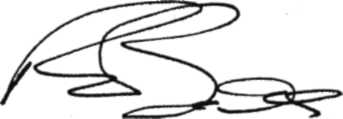IN THE SUPREME COURT OF SWAZILAND HELD AT MBABANE CRIMINAL APPEAL NO. 1 /2007 In the matter between: SIBONISO SANDILE MABUZA vs KING CORAM BROWDE JP TEBBUTT JA BANDA JA JUDGMENT BANDA, JA [1] The appellant was charged before the High Court on one count of attempted murder, where it was alleged that on or about 12th February 2004 and at or near Ndzevane Logoba area in the region of Manzini, he unlawfully and
![]()


intentionally attempted to kill Constable Lucky Dlam The appellant was also charged on a second count robbery where it was also alleged that at the same pk and time as in the first count the appellant, in compa. of others and acting with a common purpose, d unlawfully attack Sikelela Mthembu and stole from hi] some items of property which included some T-shirts an camouflage khakhi hats. At the close of the prosecutioi and defence cases the appellant was found guilty on the first count on a lesser offence of assault with intent to cause grievous bodily harm. On the second count he was found guilty as charged. [2] The appellant was sentenced to a term of imprisonment of 3 years on each count. The sentences were backdated to 15th day of February 2004 and he is effectively serving a total sentence of six (6) years imprisonment. [3] In the original notice of appeal to this Court the appellant had indicated that he was appealing against sentence only. However in the Heads of Argument, which he filed with the Court on 10th April 2007, he now states that he is also appealing against conviction on the count of robbery and that is the position he took when he argued the appeal before us.
The appellant was among a group of young men were sitting in the shade at or near a dipping tank r Ndzevane Logoba area, apparently drinking a local b: known as marula. As they sat drinking, complainant, PW3 in the case, was passing by with a h of clothes which included T-shirts and camouflag patterned soft Khakhi hats. The appellant and h friends called the complainant to go to them and, as th complainant reached them they started selecting som goods from his bag. The complainant believed that th( appellant and his friends were going to buy some of the goods. As the selection was taking place one of the appellant's friends feigned a blow at the complainant and immediately some of the boys started to run away, taking some of the complainant's goods with them. Meanwhile the remainder of the boys started to attack the complainant who managed to escape and reported the matter at Matsapha Police Station. The police reported to the scene. The trial originally started as a case where pleas of guilty would be entered but as elements of each count were being put to the accused it became clear, to the trial judge, that the pleas were equivocal and consequently he decided to enter pleas of not guilty and ordered, quite
properly in our view, that a full trial should proceed, prosecution called eight (8) witnesses to prove their c and the appellant elected to give sworn evidence. In his Heads of Argument filed with the Court, t appellant makes the following points - (1) That it was not true or that it was not proved that h That the police failed to conduct an identification parade where the complainant could have identified his assailants. That the complainant failed to inform the trial Court that not all his assailants were in Court because the allegation was that there were nine (9) assailants and only five (5) appeared in Court. The appellant has argued that failure by the complainant to give such information to the court shows that the complainant was not sure of the number of people who attacked him. (4) That the complainant did not identify which of the
took part in the offence of robbery.
exhibits produced at the trial were recovered from the
appellant.
(5) That the offences were committed while the appell and his friends were under the influence of drink. When the appellant argued the appeal before us stated that his heads of argument were not complete ; they showed some typing errors. He did not howeve. show us what the typing errors were but submitted tha as a first offender he did not know the procedure of the court and, therefore, he failed to properly put his defence. He stated that it was not correct to suggest that he ran away when the police came but that the truth of the matter was that he ran away when a fracas ensued when the police arrived at the scene. He submitted that he was innocent of the charge of robbery and that the police did not want to hear his side of the story. He conceded however, that he ran into the market place where he gave the clothes he was wearing to his sister-in-law PW1 in this case. He informed this Court that he wanted his sister-in-law to hand over the clothes to the police because he knew that they had been taken away from the complainant. It should be noted that the clothes which the appellant gave his sister-in-law were a T-shirt and camouflaged khakhi hat similar to those which had been taken from the complainant. And it should further be observed that,
on his own admission, the appellant was found wee these items of clothing immediately after they had t forcibly taken away from the complainant. We have carefully listened to the appellant's argument support of his appeal and have also considered the poir he has raised in his heads of argument. We have ah carefully considered the points raised in the heads ( argument filed on behalf of the prosecution.The tria judge, in a long judgment, took great pains tc meticulously review the evidence of each witness called for the prosecution. He also carefully considered the evidence which told in favour of the appellant. The trial judge came to the conclusion that the prosecution witnesses had made a favourable impression on him and found their evidence credible. That, in our judgment, is a finding which the judge was entitled to make, as he had the opportunity to hear the witnesses and observed their demeanour. The judge found that the appellant was among the people who took the items of property from the complainant (PW3) and that the appellant was acting in concert with his friends when they took the goods from the complainant. As an appeal to this Court is a rehearing we have also reviewed the evidence which was adduced at the trial and find that there was ample evidence to support the trial
judge's findings. There is evidence which clearly pi the appellant at the scene of the robbery and on his ( admission there is indisputable evidence which pro that immediately after the robbery the appellant w found in possession of goods which had been forcih taken from the complainant. He was seen wearing a 1 shirt and a camouflage khakhi hat which had beei identified as belonging to the complainant. There was, in our judgment, overwhelming evidence to amply support the finding of guilt against the appellant on the robbery count. We also find, on his own admission of stabbing PW4, that there was sufficient evidence to support the conviction on a charge of assault with intent to cause grievous bodily harm. There were two witnesses who saw him stab the officer as he lay unconscious on the ground. There is also the evidence that earlier before he stabbed the officer, the appellant was seen brandishing a knife and threatening to stab a police officer. The appellant also appeals against sentence. The appellant is serving a consecutive sentence of six (6) years imprisonment. A sentence is always a matter which is in the discretion of the trial Court. It is for the trial Court, after considering all the surrounding circumstances, to find what is the appropriate sentence to impose. This Court, as an appellate court, can only interfere with the sentence if there is a misdirection or
irregularity or as it is sometimes stated when this C finds that there is "a striking disparity between sentence which was in fact passed by the trial court i the sentence which the Court of Appeal would hu passed": Mduduzi Sit hole v R Criminal Appeal n 3/1987. A sentence of six years which was imposed ; the trial does not show any striking disparity nor does : induce any sense of shock. In the result the appeal i; dismissed and the convictions and sentence are confirmed.
I agree


I agree


Delivered on this Day of May, 2007.![]()
1